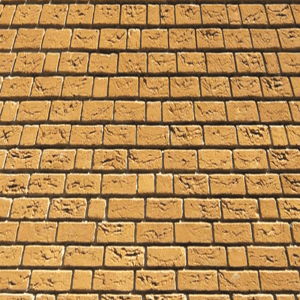Pointing and repointing brickwork Method Statement

This method statement for pointing to brickwork is available as an instant download.
At the top of the first page, you can enter your company name and project details, and at the bottom, you can sign, print, and date it.
It couldn’t be easier. Once you’ve entered your details, you’re good to go.
You can customise the document to your company and needs by inserting your company name, logo, contract details, site address, etc…
The method statement becomes part of your branded H&S package.
Repointing brickwork is a crucial maintenance process that involves carefully replacing damaged or deteriorated mortar in the joints between bricks with fresh, durable mortar. This essential practice not only helps maintain the structural integrity of the wall but also enhances its resistance to weathering, ultimately improving its overall aesthetic appeal.
The process of repointing begins with the meticulous removal of old, weathered, or compromised mortar from the outer faces of the joints in a brick wall. This is typically accomplished using specialised tools such as chisels, grinders, or power tools designed for masonry work. Once the damaged mortar is removed, the joints are thoroughly cleaned to eliminate debris, dust, and any loose material, ensuring a solid bond for the new mortar.
Mortar plays a vital role in holding bricks securely together, acting as a protective barrier against moisture infiltration and other environmental elements. When mortar deteriorates over time due to weather exposure, temperature fluctuations, or age, it can compromise the wall's structural integrity, leading to issues such as water infiltration, efflorescence, and cracks that may escalate into serious structural problems if left unaddressed.
Repointing becomes necessary when the mortar joints exhibit signs of significant degradation, such as cracking, crumbling, or recession. Homeowners should be vigilant for indicators such as open joints, soft or powdery mortar, or conspicuous cracks that suggest potential moisture entry points. Prompt action, such as repointing, can effectively restore the wall’s visual appeal and functional integrity.
By replacing the deteriorated mortar and repointing, the brickwork is restored to both its visual aesthetic and physical integrity. Not only does this process protect the wall from further deterioration, but it also extends the structure's lifespan, ensuring it remains sound and visually appealing for years to come. Properly executed repointing can significantly enhance a property's value, safeguarding it against the elements while preserving its historic character and charm.
The method statement is:
- Recognised by local authorities
- Recognised by principal contractors
- Suitable for CDM sites
- Approved by H&S managers
It increases your chance of winning tenders and has been written by trained health and safety professionals.
If the method statement needs altering to include an additional task, such as:
“Ensure you sign and date the site register located in the welfare facilities before commencing work”
It can easily be added as the document comes in Word™, not PDF.
Once you buy and download this document, it’s yours for life to use repeatedly.
We’ve done the hard work for you, allowing you to give people confidence in you, your company, your products and services.
The scope of work that this method statement covers includes:
- Start of works
- Repoint brickwork
- Finishing
Why not browse the HSEDocs catalogue of method statements, risk assessments, COSHH assessments, or industry-specific packages?
And for safety training relevant to your job, visit our online training courses.
GET THIS DOCUMENT
£8.99+VAT
- Available in Word™
- Fully customisable
- Add your Company Logo
- UK & EU Compliant

 CART
CART 